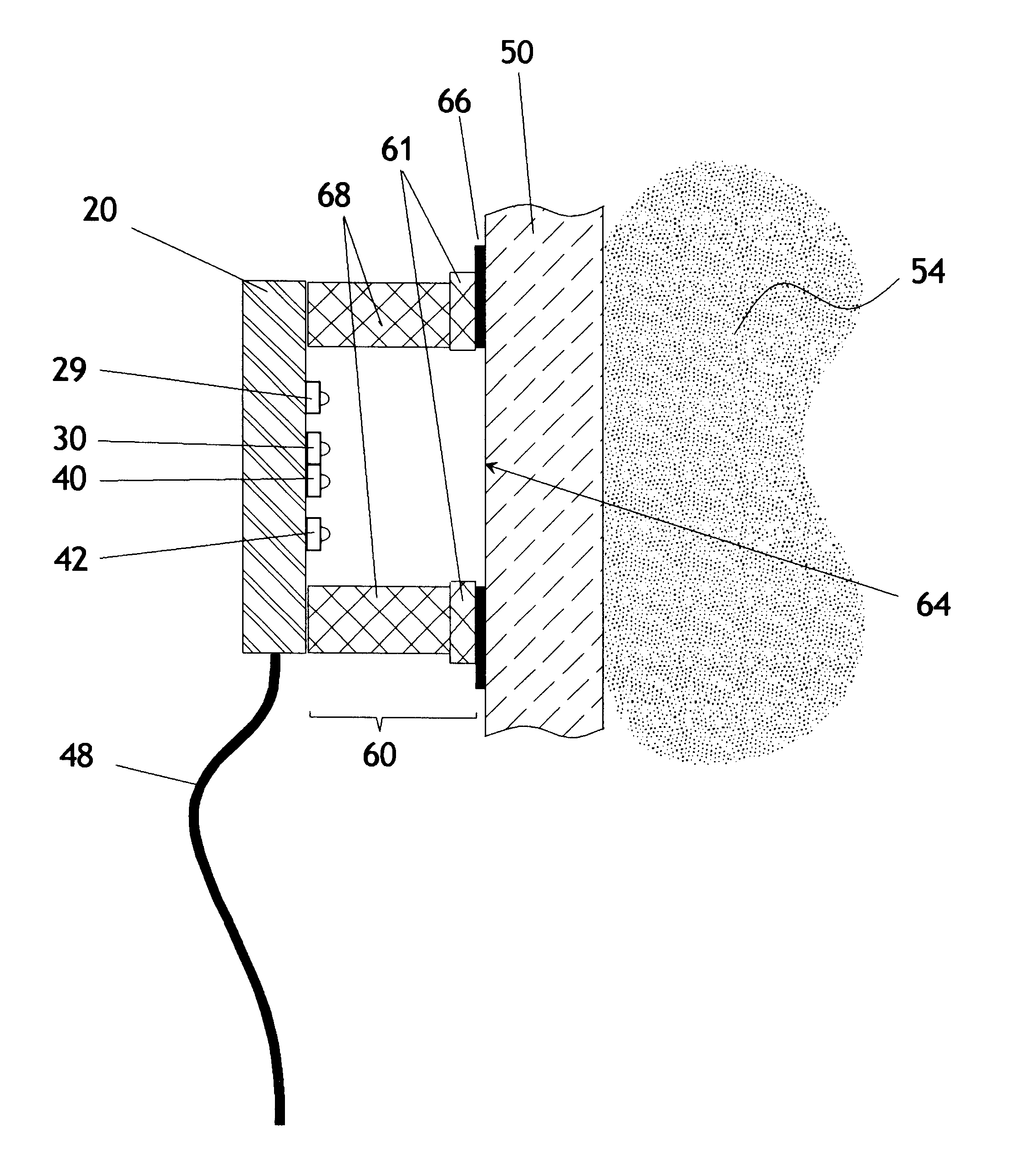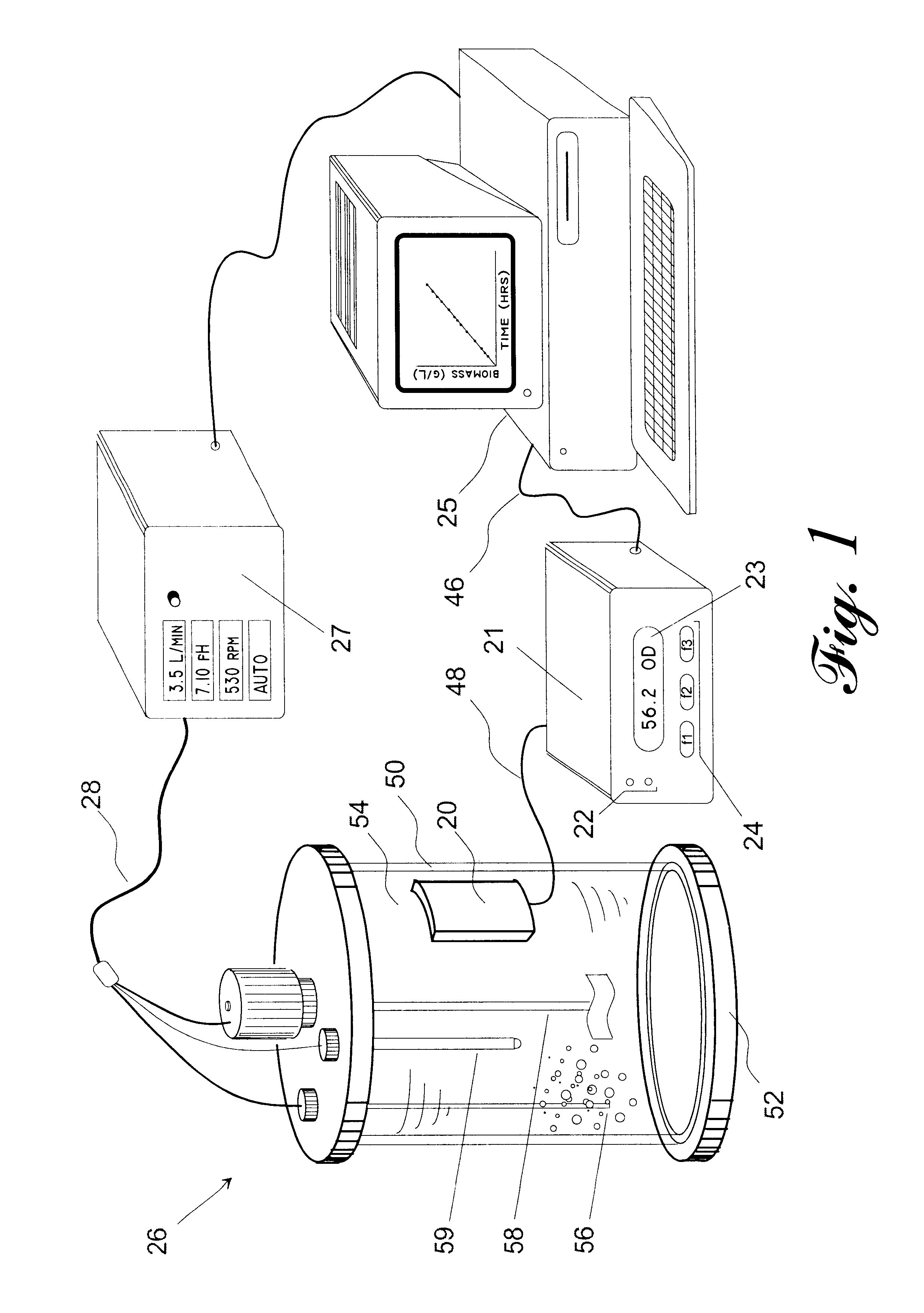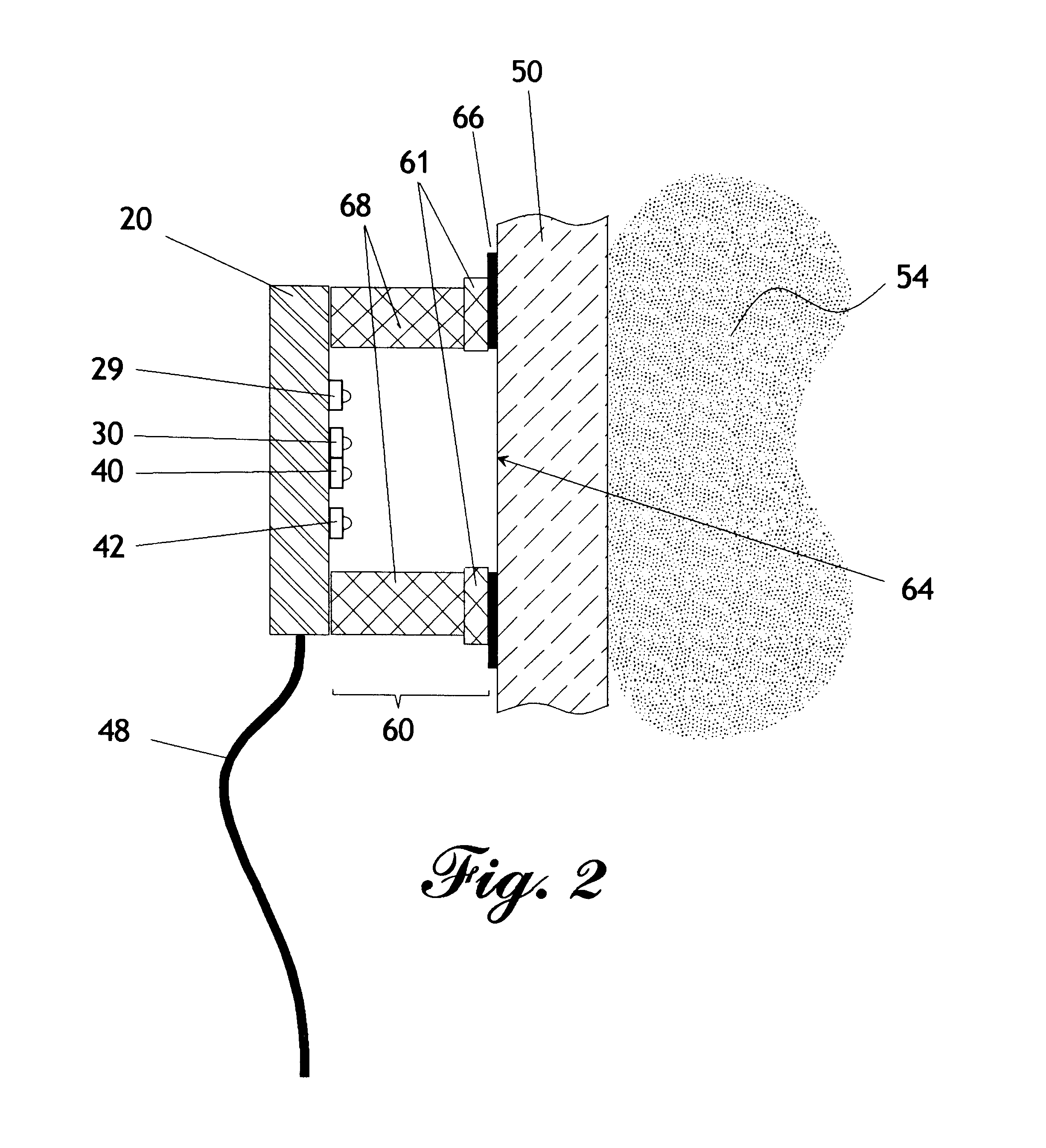Self-compensating radiation sensor with wide dynamic range
a radiation sensor and dynamic range technology, applied in the field of biomass monitoring, can solve the problems of sensor drift, radiation sensor that has been addressed in the prior art, and is not adequately resolved
- Summary
- Abstract
- Description
- Claims
- Application Information
AI Technical Summary
Benefits of technology
Problems solved by technology
Method used
Image
Examples
Embodiment Construction
In the preferred embodiment illustrated in FIG. 1, a radiation sensor 20 is used to measure the biomass in a liquid culture 54. Radiation emitted from multiple sources in the sensor passes through a window of a container 52 filled with the liquid culture of cells or microorganisms. The radiation is scattered multiple times by the cells or microorganisms, creating a "glow ball" of radiation within the culture. The intensity and size of the glow ball are dependent on the biomass within the liquid culture. At early stages of growth, when the biomass is low, the glow ball will be large in size and weak in intensity. As the cells or microorganisms grow and divide, the biomass will increase and the glow ball will reduce in size and increase in intensity. The detectors in the sensor are sensitive to the intensity of radiation emanating from the glow balls. Further, the sensor is arranged such that there are at least three separation distances between the detectors and radiation sources (se...
PUM
 Login to View More
Login to View More Abstract
Description
Claims
Application Information
 Login to View More
Login to View More - R&D
- Intellectual Property
- Life Sciences
- Materials
- Tech Scout
- Unparalleled Data Quality
- Higher Quality Content
- 60% Fewer Hallucinations
Browse by: Latest US Patents, China's latest patents, Technical Efficacy Thesaurus, Application Domain, Technology Topic, Popular Technical Reports.
© 2025 PatSnap. All rights reserved.Legal|Privacy policy|Modern Slavery Act Transparency Statement|Sitemap|About US| Contact US: help@patsnap.com



